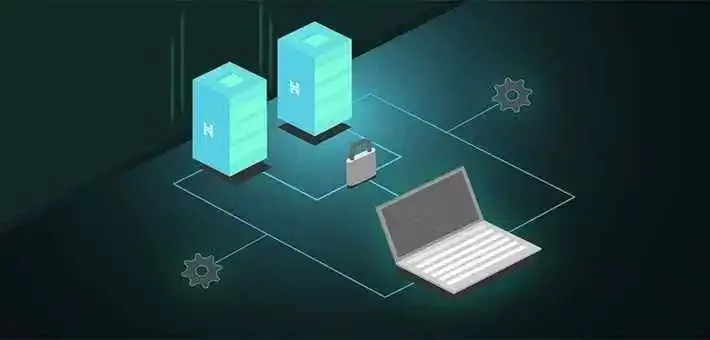More MCQs
HOME
Categories
Management Information System
» Emerging Technology in E-Business MCQs
» Infrastructure and Operations MCQs
» System Development Lifecycle & Software Development Models MCQs
» Project Management MCQs
» The Process of Auditing Information Systems MCQs
» Governance and Management of IT MCQs
» Auditing Infrastructure and Operations MCQs
» Information Security Management MCQs
» Business Continuity and Disaster Recovery MCQs
Information and Database MCQs
Database – is defined as a collection of structured data. Its structure is determined by the data themselves rather than the needs of a particular software application or group of users. Here on MCQs.club we have written easy Multiple-Choice Questions on Information and Database, that fully cover MCQs on Database management System Multiple Choice Questions with Answers, Database mcqs, DBMS mcqs. These DBMS MCQ Questions with Answers are useful for Business management exams, Professional Accountancy exams and Competitive exams.
- Database – is defined as a collection of structured data. Its structure is determined by the data themselves rather than the needs of a particular software application or group of users.
- The above is correct
- The above is incorrect
- An effective database will:
- Avoid redundancy of data
- Support use by a wide variety of software applications and user groups
- Be capable of adapting to changing data capture and storage requirements
- All of the above
- Database Management System (DBMS) –
- Are system software that aid in organizing, controlling and using the data needed by application programs.
- Provides the facility to create and maintain a well-organized database
- Provides functions such as normalization to reduce data redundancy, decrease access time and establish basic security measures over sensitive data
- All of the above
- Database Management System (DBMS) can control user access at which of the following levels?
- User and the database
- Program and the database
- Program and data field
- User and data field
- All of the above
- The advantages of Database Management System (DBMS) include:
- Data independence for application systems
- Ease of support and flexibility in meeting changing data requirements
- Transaction processing efficiency
- Reduction of data redundancy
- All of the above
- Data elements required to define a database are called metadata. Types of metadata are:
- Conceptual schema
- External schema
- Internal schema
- All of the above
- The functional capabilities Data dictionary and Directory systems (DD/DS) provides include:
- Validates the definition provided to ensure the integrity of the metadata
- Interrogation and reporting facilities that allow the DBA to make inquires on the data definition.
- Prevents unauthorized access or manipulation of the metadata
- All of the above
- Benefits/Advantages of using Data dictionary and Directory systems (DD/DS) include:
- Enhancing documentation
- Providing common validation criteria
- Facilitating programming by reducing the needs for data definition
- Standardizing programming methods
- All of the above
- Data Modeling – is a technique in software engineering where a specific data model is created for an information system by means of data modeling techniques like database management system.
- True
- False
- Types of Database Organization include:
- Hierarchical
- Network
- Relational
- All of the above
- Disadvantages of Databases include:
- A large database can be more complex than a file processing system.
- Larger databases also require more memory, storage and processing power than file processing systems
- Both A&B
- None
- What controls should be to ensure database integrity?
- Establish definition standards and closely monitor for compliance
- Establish and implement data backup and recovery procedures to ensure database availability
- Establish controls to ensure only authorized personnel can update the database
- Perform database reorganization to reduce unused disk space and verify defined data relationships
- Follow database re-structuring procedures when making logical, physical and procedural changes
- Minimize the ability to use non-system means, for instance, those outside security control, to access the database
- (I) (II) and (VI) only
- (III) (IV) and (VI) only
- All of the above
- None
- Data Warehouse –
- There is an initial setup phase during which relevant information is extracted from different networked data sources, transformed and cleansed as necessary, fused with information from other sources and then loaded into a centralized data store
- It offers higher availability and better query performance than the on-demand approach because all data can be retrieved directly from one single dedicated site.
- Both A&B
- None
- Management Information Systems (MIS) can be viewed as being constructed to serve various levels and aspects of management activities in the organizational hierarchy. The levels represent decision made in organizations including:
- Strategic planning decisions
- Managerial control decisions
- Operational control decisions
- All of the above
- Office Automation Systems (OAS) –
- Helps with the need for solutions that can handle all the office updates, tasks, functions and ensure that aspects like raw data storage, managing electronic business data.
- It collects, stores and oversees the aspects of a business effectively without any error.
- Both A&B
- None
- Transaction Processing System (TPS) – Represent the lowest and the most basic use of information within an organization, and are an integral part of the operation of the organization.
- The above is correct
- The above is incorrect
- Management Information Systems (MIS) –
- A set of formalized procedures designed to provide managers all levels with appropriate information from all relevant sources.
- They generate information for monitoring performance and maintaining coordination.
- MIS extracts process and summarize data from the TPS and provide periodic reports to managers.
- All of the above
- Management Information Systems (MIS) reports can be classified by content or time. In terms of content, reports may be:
- Comprehensive
- Summary
- Exception reports
- All of the above
- In terms of time Management Information Systems (MIS) produces:
- Historical reports
- Status reports
- Predictive reports
- All of the above
- Program library management systems – Provide several functional capabilities to facilitate effective and efficient management of data center software inventory.
- True
- False
- Capabilities of Program library management system include:
- Integrity
- Update and Reporting
- Interface
- All of the above
- Which of the following would not be considered an end-user of an information system?
- A student who accesses information on a website
- A programmer who write code for a software module
- A customer who uses a credit card in an EFTPOS machine
- A sales assistant in a video shop who searches a database for a specific title
- TPS generally contains at least two types of files:
- Master files and Transaction files
- Data files and Image files
- Index files and Sequential Access files
- Direct and Random-Access files
- The language used application programs to request data from the DBMS is referred to as the:
- DML
- DDL
- Query language
- All of the above
—More to come soon—




